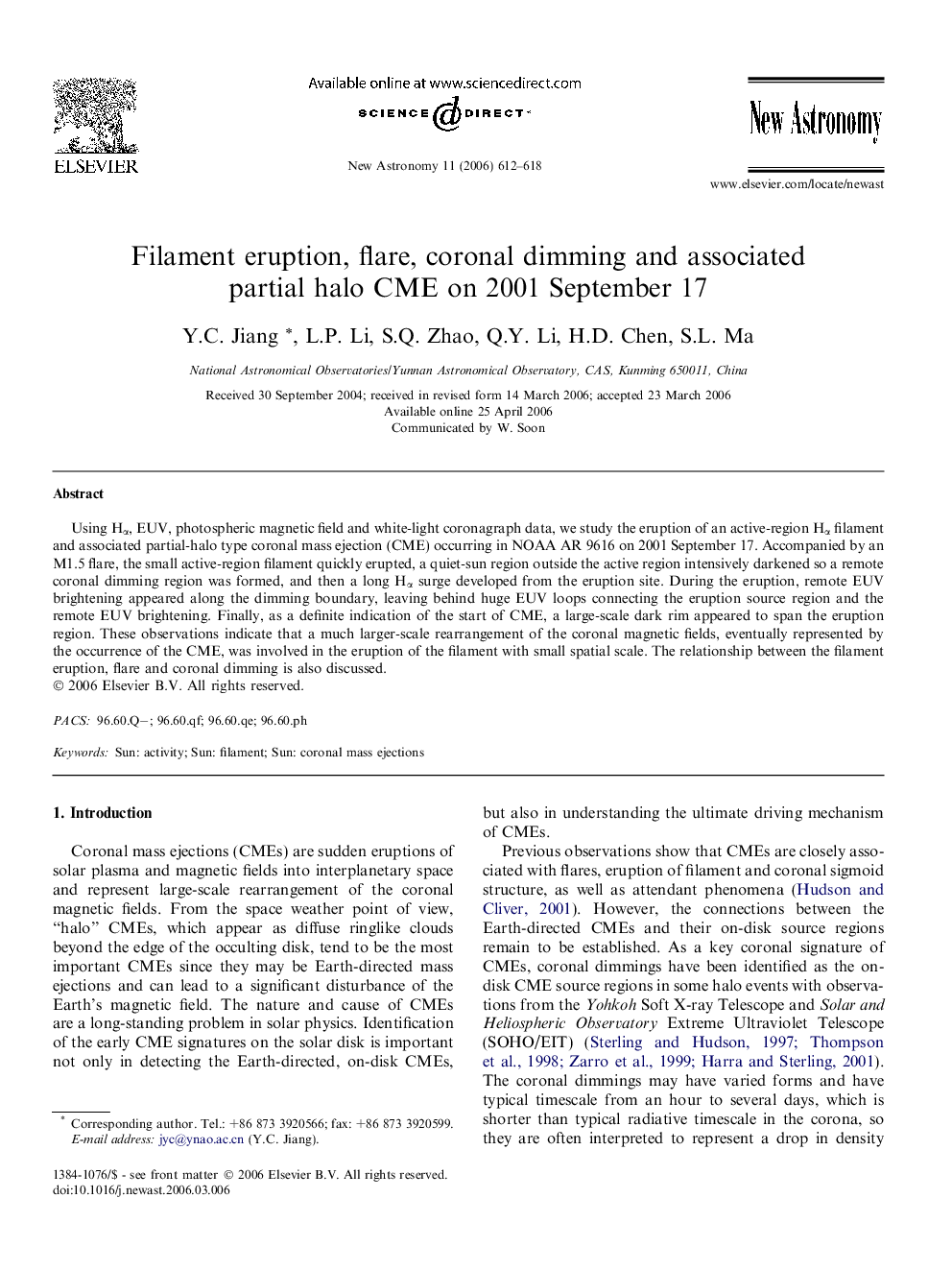| Article ID | Journal | Published Year | Pages | File Type |
|---|---|---|---|---|
| 1779800 | New Astronomy | 2006 | 7 Pages |
Abstract
Using Hα, EUV, photospheric magnetic field and white-light coronagraph data, we study the eruption of an active-region Hα filament and associated partial-halo type coronal mass ejection (CME) occurring in NOAA AR 9616 on 2001 September 17. Accompanied by an M1.5 flare, the small active-region filament quickly erupted, a quiet-sun region outside the active region intensively darkened so a remote coronal dimming region was formed, and then a long Hα surge developed from the eruption site. During the eruption, remote EUV brightening appeared along the dimming boundary, leaving behind huge EUV loops connecting the eruption source region and the remote EUV brightening. Finally, as a definite indication of the start of CME, a large-scale dark rim appeared to span the eruption region. These observations indicate that a much larger-scale rearrangement of the coronal magnetic fields, eventually represented by the occurrence of the CME, was involved in the eruption of the filament with small spatial scale. The relationship between the filament eruption, flare and coronal dimming is also discussed.
Related Topics
Physical Sciences and Engineering
Physics and Astronomy
Astronomy and Astrophysics
Authors
Y.C. Jiang, L.P. Li, S.Q. Zhao, Q.Y. Li, H.D. Chen, S.L. Ma,
